The above quote aptly describes all the events that are to be described in the following lines & just proves, how it is destiny, that decides the course of action & maybe even the whole life, of not just an ordinary man but even of the greatest of emperors. Although the common person believes that rulers of great empires must have had a very easy life, without any difficulty whatsoever, but the reality is always not so simple. Even these great kings/emperors and rulers had to undergo tremendous difficulties to survive and finally succeed in their life. They had been wronged many times in life and hurt by people, who had no logical reasons to do so. When pushed to the wall, these great heroes were forced to fight back, giving rise to the greatest revenge stories of all time, some of which are described below.
The Hollywood blockbuster – 300 (& its sequel) describes beautifully, the beginning of the problem that would lead to a series of events, culminating with the burning of Persepolis. But for those who have not seen the movie, a brief description would be useful. The second Persian invasion of Greece, began in spring of 480 BC, when king Xerxes I of Persia invaded Greece to take revenge of failure of the First Persian invasion of Greece, initiated by his father– king Darius I of Persia, which ended with victory of Greek forces in Battle of Marathon in 490 BC.
After the death of king Darius, I of Persia, his son – Xerxes I decided to complete his father’s incomplete dream and invaded Greece in 480 BC. One of the first opposition, the invading Persian army faced was from the king of Sparta – king Leonidas I. In the battle of Thermopylae that followed, the valiant king Leonidas held off the far numerically superior Persian army for 3 days before all of them became martyrs to the cause of Greece’s freedom.
Many parts of Greece fell to the invading Persian forces and the victorious army reached Athens. Although a vast majority of citizens had left the city, a few who had stayed back, tried to defend the city but were defeated in September 480 BC. Xerxes ordered his soldiers to burn the city and destroy all important cultural & religious icons. The first phase of the destruction of Athens followed. Acropolis, Older Parthenon and Old Temple of Athena, all of these great ancient structures were destroyed. Valuable statues were vandalised by the Persians and some other famous ones like the bronze statue of Harmodius and Aristogeiton - was taken away by Xerxes.
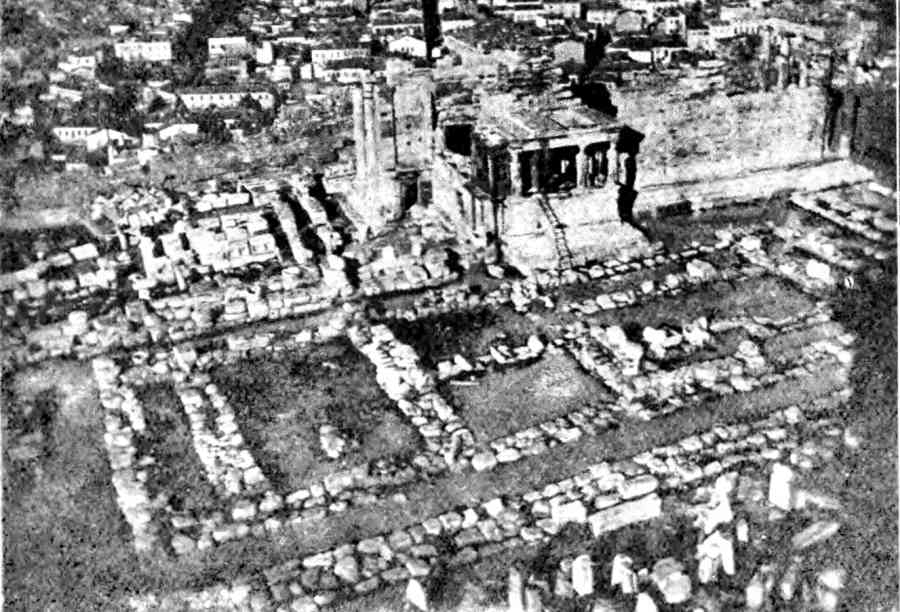
However, the naval victory of Greek forces in Battle of Salamis, made King Xerxes reconsider his plan and he retreated back to Asia, leaving his trusted general Mardonius with the elite of his army, to complete the conquest. Mardonius once again marched into Athens in 479 BC and re-took Athens, which they had vacated in the last winter. This time the Persian general totally destroyed all the houses and temples, that were still left standing, in the 2nd phase of destruction of Athens. However, the Battle of Platea and Battle of Mycale, which followed soon after destroyed the Persian army and naval forces, in the respective battles. Mardonius was killed in the battle and with him ended the Persian dream of conquering the Greeks. Greece was finally safe.
Although the Greeks foiled the Persian plan to take over their country (or city states, to be precise), the destruction of Athens and the calamity inflicted on Greece as a whole was not forgotten. As times passed, Greek found a new saviour – Alexander the great, who had been a student of wise Greek scholars like Aristotle. Alexander’s campaign to rule over the whole world would bring him on direct conflict with the greatest empire of the world – the Persian Empire.
Almost a century and a half later, from the time when King Xerxes of Persia had invaded Greece, history turned exactly in the opposite direction, when in 331 BC Alexander the great invaded Persia and met the army of King Darius III in Battle of Gaugamela. The epic battle took place near Gaugamela, in modern day Iraqi Kurdistan. The battle ended with the decisive victory of Alexander and end of the Persian empire.
By year 330 BC, Persepolis - the former capital of the Persian Empire, fell to the Greek Army. Of particular importance is the fact that Darius I, the Persian king who had invaded Greece, some 160 years back, was the founder of the city. He also made the city, the capital of Persia, during his reign. However, the invading Greek army killed the defenders of the city and looted the city (which at the time was known as Jewel of Persia) and the royal palace to their heart’s content. According to some ancient estimates, Alexander carried away some 2500 tons of precious metals from the palace, using thousands of mules and camels. The citizens of the city were either killed or taken as captives.
Finally, the Greek army burnt the great palace and the surrounding city to the ground. This whole act was done deliberately, to avenge the Persian burning of Athens in 480 BC, which destroyed priced Greek cultural & religious icons. This unfortunate mayhem in the city of Persepolis, totally destroyed the art, culture, and knowledge, that Persia had accumulated over many centuries. However, ancient Greek artefacts like the bronze statue of – Harmodius and Aristogeiton, which had been taken away from Greece by Xerxes, was recovered by Alexander and found their way back to its rightful place.
Alexander would not stop just at victory over Persia but decided to move further east, till he reached the western borders of India. Unfortunately, small kingdoms in the western border areas of India were divided and fell easily under control of Greek army led by Alexander. However, Alexander’s army refused to go further east and Alexander was forced to turn back. The areas conquered by the Greek army were left under local governors as Alexander turned back to go back to his home.
When the armies of Alexander were marching towards India, a Brahmin teacher in Taxila University (which is considered as the oldest university of the world) – Chanakya, was trying in vain to unite the divided Indian Kings. It was an act of destiny, that Alexander was forced to turn back. However, Chanakya recognised the need to unite India under one ruler and decided to train one of his students – Chandragupta Maurya, to take up the role. However, Chandragupta was a commoner, but the genius mind of Chanakya (after a lot of trials and tribulations) was finally able to turn his student into the first Indian emperor to unite India. Soon the western kingdoms which were part of the Greek empire fell to avenging army of emperor Chandragupta Maurya and became part of Indian Maurya Empire.
Seleucus I Nicator, who was one of the main generals of Alexander the great, inherited the eastern part of Alexander’s empire after his death. Seleucus I Nicator had now become the founder of the Seleucid Empire and an emperor on his own right. However, the problem was the eastern, erstwhile provinces of Alexander’s empire, which were now in control of the Indian emperor – Chandragupta Maurya. The clash between the two titans was inevitable.
The war between the 2 emperors, was later known as the Seleucid – Mauryan war and was fought between the years 305 BC to 303 BC. The outcome of the war was a great victory for the Indian army, as the Greek forces were forced to retreat back and the Mauryan forces of the Indian emperor, took control over land as far as, modern day Afghanistan. Seleucus was forced to make peace with the Indian empire, and to show his loyalty to the Indian emperor, he got his daughter married to Chandragupta Maurya. Indian lands were once again under control of an Indian emperor, to whom the Greek forces were forced to make peace, under the terms and conditions dictated to them. India’s defeat to Alexander had finally been avenged. Chandragupta Maurya and his teacher – Chanakya, are still revered to this day in modern India, for their accomplishment 2300 years back.
After the Greek empire, another empire rose in Europe, which took over a vast stretch of lands extending from Britain in the west to parts of Asia in the east. Like the Greeks before them, the Romans too allowed in many cases, local rulers to rule, as long as they accepted Roman dominion. After the Romans conquest of Britain in 43 AD, they allowed some local tribes to be ruled by their own rulers, who accepted subjugation of the Roman empire. Prasutagus was one such ruler, who was king of the Iceni tribe; along with his wife Boudica and his two daughters, he led a relatively peaceful life in a troubled period. Life was easy, till the king died.
However, once the king died, the Roman rulers decided to do with their British subjects, what the British would do later, with their colonies in the 19th/20th century. They ignored the will of the dead king and forcibly took over their kingdom. As if that was not enough, they plundered the kingdom, confiscated the property of their leading men, flogged the queen Boudica and the young daughters were violated. Pushed against the wall, the Iceni had only one option – to fight back.
In 61 AD the Iceni joined with Trinovantes, and other tribes to form an army of 100,000 strong people and revolted against the Romans, with queen Boudica as their leader. The rebel army’s first target was Trinovantian capital of Camulodunum, which had been taken over by Rome and changed into a Roman city with a Roman population. Boudica attacked this city with her large army and destroyed it. The number of Roman citizens, were grossly inadequate to defend the city and Romans suffered heavy casualties.
The next target of the rebel force was Londinium (modern day London), which at the time was a recently formed town, which was formed after the Roman conquest of 43 AD. The prosperous commercial centre was burned down by Boudica’s army and captured Romans were eliminated. The next town to fall to the rebels was Verulamium, which also faced a similar fate as the earlier cities. It is estimated that the rebel army killed around 80,000 people during their revolution and some of these were also Britons, who supported the Romans.
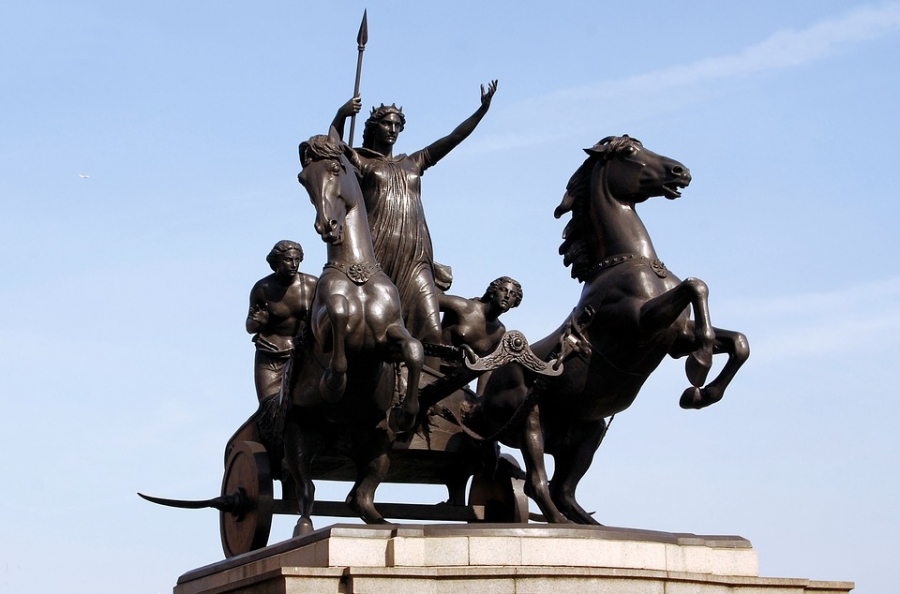
Unfortunately, Rome was a great empire and they would never accept defeat so easily. The Roman governor – Gaius Suetonius Paulinus, regrouped his forces and made a stand against his enemies around West Midlands. The battle ended with a colossal defeat for the Britons. Boudica took poison to escape capture, but in her death became an important cultural symbol for her countrymen.
Any discussion of Roman empire would be incomplete without mentioning Roman general Julius Caesar, who practically was the founder of the empire (although officially this designation goes to his great nephew and adopted son – Augustus Caesar). Julius Caesar was a remarkable man, whose courage, ambition, pride, and grandiose vision were almost like Alexander the great. So, it would be obvious that if someone tries to exploit such a person, it would not end in a good way for them. However, Julius Caesar had not yet reached the stature (this story is about a time when he was very young) for which history remembered him, and the Cilician pirates who kidnapped a young Caesar must have regretted their decision later on.
75 BC would be the year that many pirates, would remember for rest of their lives, as a band of Cilician pirates captured 25-year-old Julius Caesar in the Aegean Sea. Young Caesar demonstrated all the qualities at a young age, which would later turn him into a legend. Instead of being scared because of his captivity, he was rather amused. So, when the pirates asked for 20 talents as ransom money for Caesar’s release, a visibly insulted Caesar asked them to raise the ransom amount to 50 talents, which would be more befitting of his stature. He also told the pirates that once released, he would get them all crucified. The pirates took his behaviour as a joke of an eccentric rich youth.
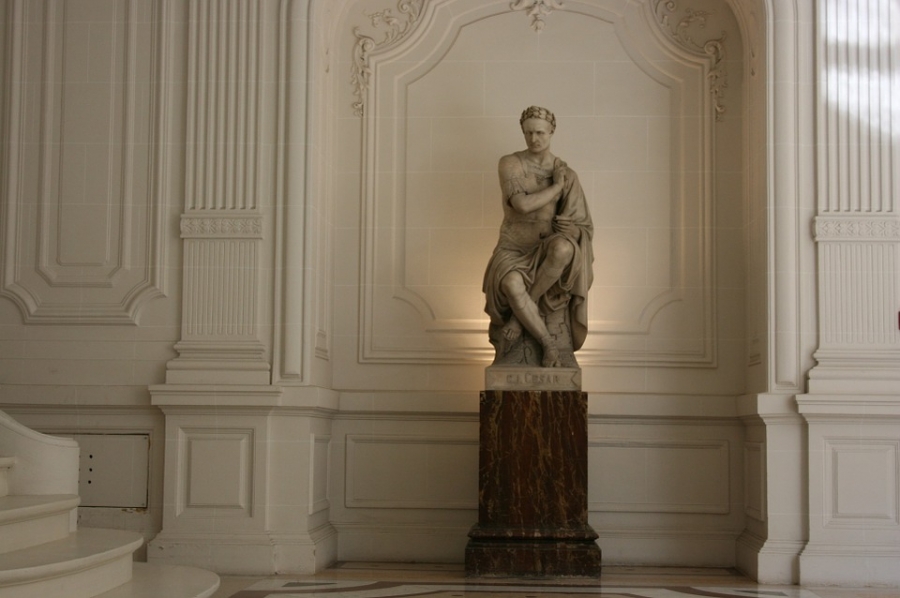
Once the ransom was paid and Caesar was freed, he raised a naval force and went searching for the pirates. The pirates had not taken Caesar’s statements seriously and were still on the island where they held Caesar captive. Caesar captured the pirates and had his revenge - the pirates were brought back as prisoners and crucified as Caesar had promised.
The above-mentioned incidents clearly demonstrated that Caesar could be a very violent man when he wanted and he did want it quite frequently. His quest for power and his wild pursuit to fulfil his ambition did get him many powerful enemies. His luck would also not favour him always, as it did when he was safely released from the captivity of the pirates. Unfortunately, Caesar was a person who had thrown all caution to the winds many times in his life in his arrogance/confidence, and in one such episode, he finally lost his life.
Julius Caesar was killed during a meeting, in which his closest friends conspired against him. He had been warned by his wife – Calpurnia and a fortune teller named – Spurinna, that his life was in danger; but he still left his house to attend a meeting in the senate. He had no reason to suspect anybody as he was a popular leader and Gaius Cassius Longinus (Cassius), Marcus Junius Brutus (Brutus) and Junius Brutus Albinus (Decimus), who conspired against Julius Caesar, were all his close friends and eminent citizens of Rome. The main 3 conspirators in time recruited many other people to join their plot and on 15th March 44 BC, Julius Caesar was assassinated in the Senate House.
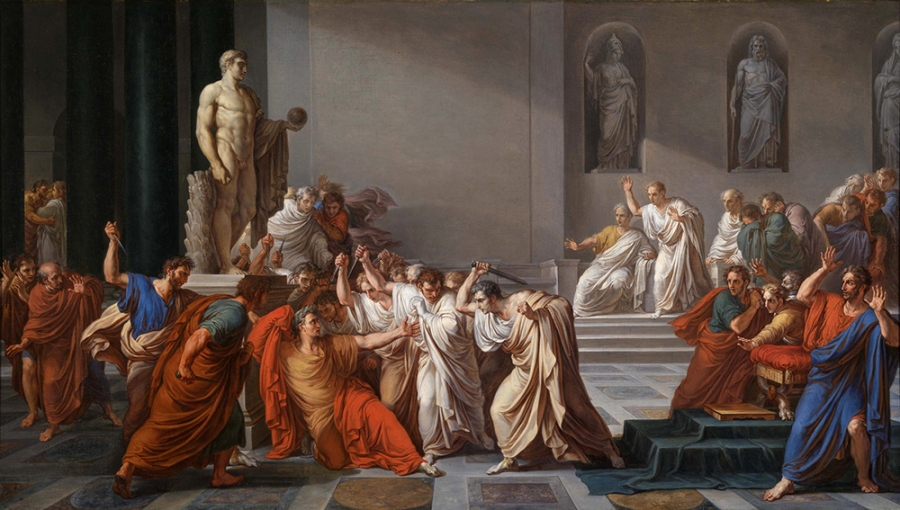
The murder of Julius Caesar plunged the Roman republic into crisis, as loyal friends of Caesar – Mark Antony, Gaius Octavius (also Caesar’s great nephew & later his successor) and Marcus Aemilius Lepidus joined forces to punish the traitors. The civil war that started with a showdown between the two sides, ended with the death of the traitors, many of whom after losing the war committed suicide. The republic had ended and Augustus Caesar became the first Roman emperor.
Queen Olga of Kiev was the wife of King Igor of Kiev, a ruler of Kievan Rus – a kingdom, from which modern Russia, Belarus, and Ukraine are derived. Igor was an ambitious king who had tried to spread his kingdom far and wide, but his greed was also the cause of his downfall. Once on a trip to collect revenues from Drevlians - a tribe of early east Slav people, he demanded more money than what had been previously agreed upon. Furious the Drevlians killed the king and sent a message to Olga, to marry prince Mal of Drevlians, so that the later could get dominion over the land of the slain king.
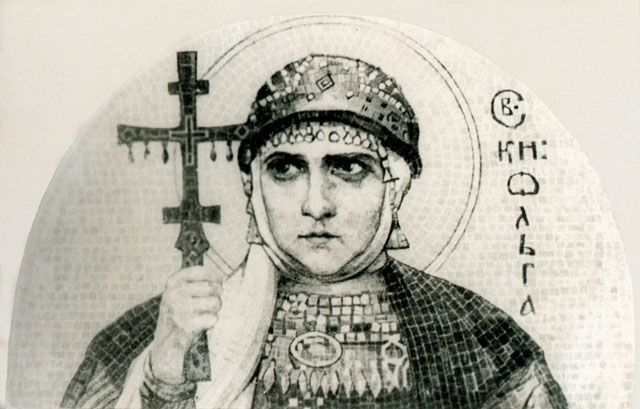
After the death of king Igor, his young son – Sviatoslav should have come to power, but as he was only 3 years old, so his mother – Queen Olga took over as a regent. She had no intention of marrying someone, who had killed her husband but decided to progress with great tact and diplomacy. A short crew of 20 men, who had come to persuade Olga to marry their prince, were burnt to death. The message was then sent to prince Mal, that Queen Olga would marry the prince, only if an escort of the best and most capable Drevlian men, would come from his kingdom and take the Queen back. Prince Mal agreed and his best men came to take the queen back. However, once these distinguished men arrived, the queen told them to freshen up and take a bath. While these men were taking a bath, the bathhouse was locked and set on fire. Needless to say, all these men perished.
Finally, the queen did arrive at the capital of the Drevlians - Iskorosten, where she first decided to see the body of her dead husband and mourn his death. The overjoyed Drevlians decided to host a feast on the special occasion. They had doubts regarding their missing men, but Olga was successful in convincing them, that everything was well. During the feast, the Kievans ensured that the Drevlians got thoroughly drunk. Once their unsuspecting enemies were totally drunk, Kievans pounced on them and eliminated 5000 of them, before heading back home.
On returning home, Queen Olga raised an army for a full invasion of Iskorosten, which was totally defenceless now. The shaken and scared Drevlians begged for mercy when the Kievan army reached their city. Olga asked for only 3 pigeons and 3 sparrows from each house as a tribute, to which Drevlians happily complied. Olga gave the birds to the soldiers of her army and instructed them to tie a small piece of cloth with sulfur in it, to each bird.
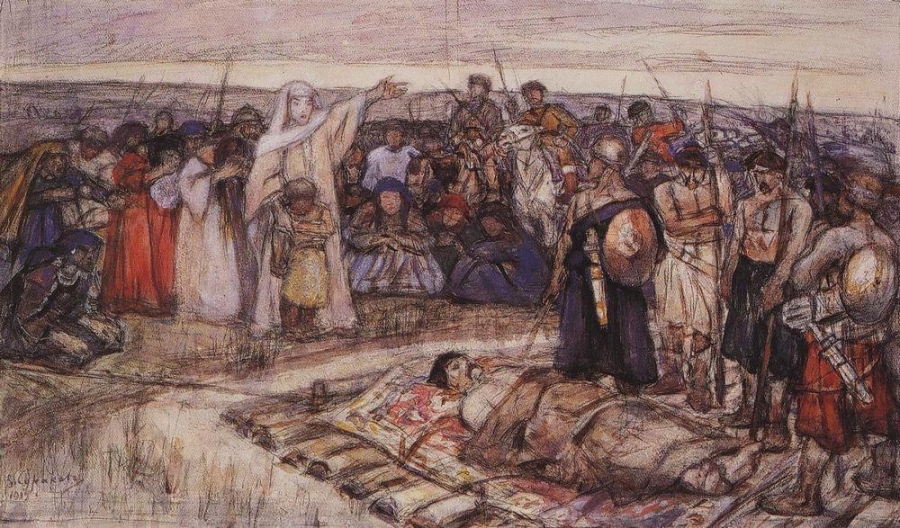
At night the birds were released back to the city. The sparrows went back to their nests & pigeons went back to their shelters. Soon the soldiers set fire to all these places, and thanks to earlier preparation of the birds, all the houses of the city were on fire. The city was burnt, and of the people remaining, some were eliminated and others were taken as slaves, and few were left alive to pay tribute in the future.
Enrico Dandolo was born in 1107 in Venice, to an influential noble family. As he grew up, he began to shoulder the responsibility which his family position brought him. Soon this would take him on diplomatic journeys to different kingdoms, to carry out his responsibility. In 1171 a war broke out between the Byzantine Empire and the Republic of Venice; as the Byzantine empire had imprisoned thousands of Venetian citizens, because of some serious difference that had been growing for quite some time. The Byzantine Venetian war of 1171 ended with as a terrible failure of the Venetian forces.
During this period and immediately afterwards, attempts to find a diplomatic solution was undertaken many times by the Venetians and Enrico Dandolo had made many diplomatic trips to Constantinople. According to historians, his strong stance to protect the rights of Venetian citizens landed him on the wrong side of the Byzantine emperor. He was blinded. However, his loss of vision and increasing age did nothing to dampen his spirit.
Enrico Dandolo became the 41st Doge of Venice (Duke & leader of the Republic of Venice) on June 1, 1192 AD. Blinded and 84-year-old, Enrico Danolo had not forgotten his personal loss or national humiliation, because of the Byzantine empire. He was looking forward to an opportunity to settle scores with his enemies and the opportunity would soon present itself.
At the beginning of the 13th century, the Byzantine empire was caught in a power struggle, between family members. One side asked the help of Venice, to get him the throne, in lieu of financial benefits. The Venetians by that time had formed an alliance with the Crusader army going for the 4th crusade. This army attacked Constantinople and managed to put Alexios IV (who had been supported by Venice) on the throne. After getting back the throne, the new king went back on his promise to pay the Venetians. Soon Enrico Dandolo realised that they would not get any money & the crusader army was allowed to take things forcibly.
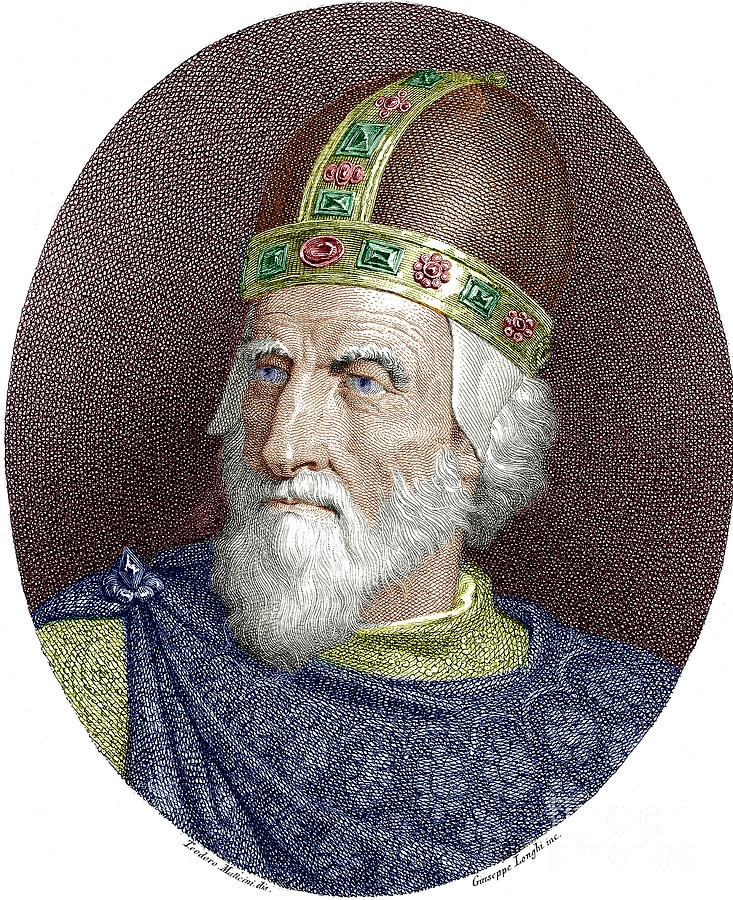
On April 13, 1204, Constantinople fell to the crusader army, who sacked the city and an estimated 900,000 silver marks were looted by the invading army. The whole promise of the crusade was lost by Christian forces fighting Christians, instead of the initial goal of taking back the control of Jerusalem from Islamic forces. Although the looters had greatly benefited from the sacking of Constantinople, the capital city of the Byzantine empire was badly destroyed and the empire became considerably poor, weak and smaller. Enrico Dandolo finally had his revenge.
Genghis Khan is known as one of the greatest conquerors of the world, who came from a very humble background but whose achievements were far greater than even Alexander the great and Julius Caesar. However, the fact which clouds his achievements is his ruthless elimination of his enemies, without any sympathy. But was Genghis Khan really a merciless conqueror or his actions just highlighted the predicaments of a difficult time, during which he lived. Here a short discussion of the Mongol’s conquest of the Khwarezmian empire, which brought Genghis Khan his greatest infamy, would shed some valuable light on the matter.
Khwarazmian Empire consisted of a large part of central Asia and modern-day Iran and was ruled by Shah Ala ad -Din Muhammad at the time of Genghis Khan. To further commercial trading interest in strategically located Silk Road, Genghis Khan sent a 500-man caravan to the empire with friendly intention. Unfortunately, the local governor of Khwarezmian city of Otrar – Inalchuq, attacked the caravan claiming it contained spies. Even later when attempts were made to clear up the misunderstanding, the governor refused to hand over the attackers and refused to compensate for the loss suffered.
Genghis Khan still tried to come to a rational solution and sent another group of 3 ambassadors to the Shah himself hoping for a peaceful solution to the Khwarezmian crisis. However, the Khwarezmian emperor, got the head of 2 Mongol ambassadors shaved and killed the 3rd ambassador, who was a Muslim and sent his head back along with the remaining 2 ambassadors.

Forced to salvage his dignity and pride, Genghis Khan invaded the Khwarezmian empire with a great army of 100,000 soldiers and his best generals. Khwarezmian empire fell like a deck of cards to the invading Mongol army. Genghis Khan ordered his army to destroy palaces, towns and even the farmlands. The governor who had initiated the whole scenario was apprehended and killed and a vast populace was either killed or taken as a slave. The Shah himself died under mysterious circumstances.
Most people think Dracula as a blood sucking vampire, but the fictional character was based on a real ruler of mediaeval Romania (the historical area of Wallachia, to be more precise) who was loved by his own countrymen but hated and feared by his enemies. Vlad Dracula (Dracula being the family name), became a ruler of Wallachia in 1436 AD, but his childhood and upbringing had exposed him to many negative experiences. Vlad’s father and his elder brother had been murdered; Vlad himself had been held as a hostage, along with his younger brother – Radu in their childhood, by the Ottoman empire to force their father to bow down before them.
By the time Vlad Dracula became the ruler of Wallachia, he was already a bitter character and full of hate against the Ottoman empire and its soldiers, who had mounted many attacks to take over Europe. Vlad Dracula as a European ruler refused to bow down to the Ottoman Sultan – Mehmed II. This brought him in direct confrontation with the Ottoman forces. Vlad was successful in inflicting severe damage on his enemies, in spite of having a smaller army, mostly because of his terror tactics. His habit of impaling his enemies created fear in the hearts of his enemies and thus weakened them, even before actually meeting him on the battlefield.
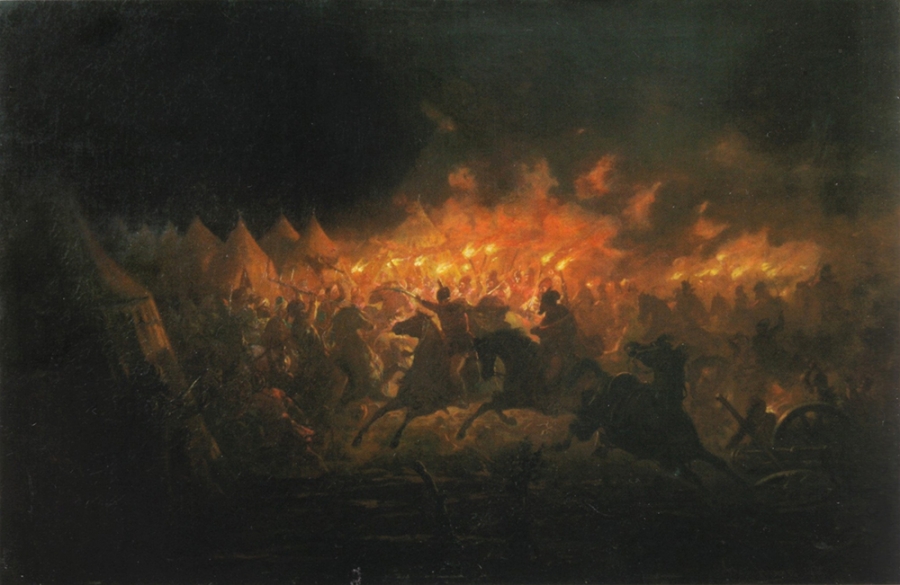
People who live by the sword, usually die by the sword and Vlad Dracula also met a violent death fighting in a battle. However, many Romanians consider Vlad as a just ruler and a national hero, who killed the enemies of the land to defend his own country and save his own people. His reputation has lasted for centuries after his death and inspired Bram Stoker to write his famous 1897 novel – Dracula, which told the famous story of a blood sucking vampire.
The incidents described above just proves that using violence as a means to achieve beneficial ends does not pay, at least never in the long run. The times of the absolute monarch are long gone and with democratically elected governments all around the world, we live in a relatively peaceful era. However, revenge stories have never been just restricted to the aristocracy, but the common populace has also time and again fallen prey, to the temptation of resorting to violent means, for solving a problem. As has been discussed, using logic and peaceful methods to solving a dispute is a better alternative any day; and finally, people who do not learn from history, are doomed to repeat it.